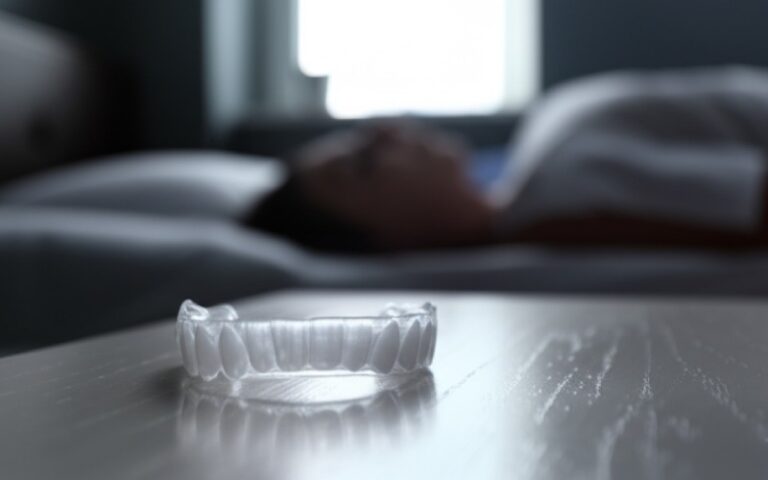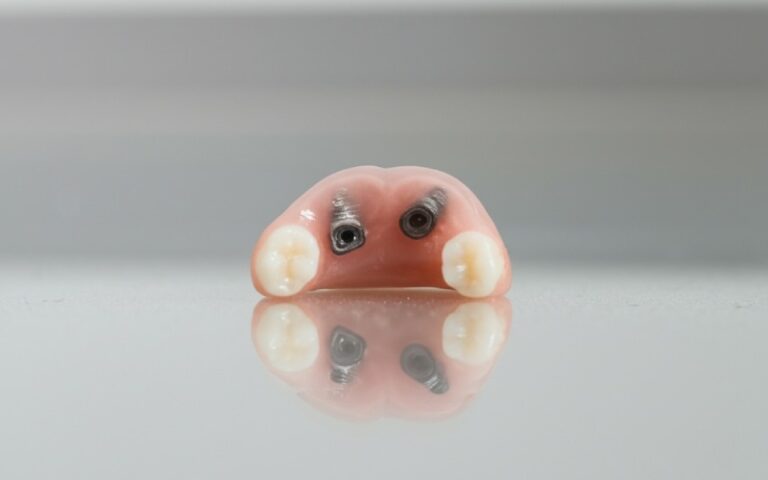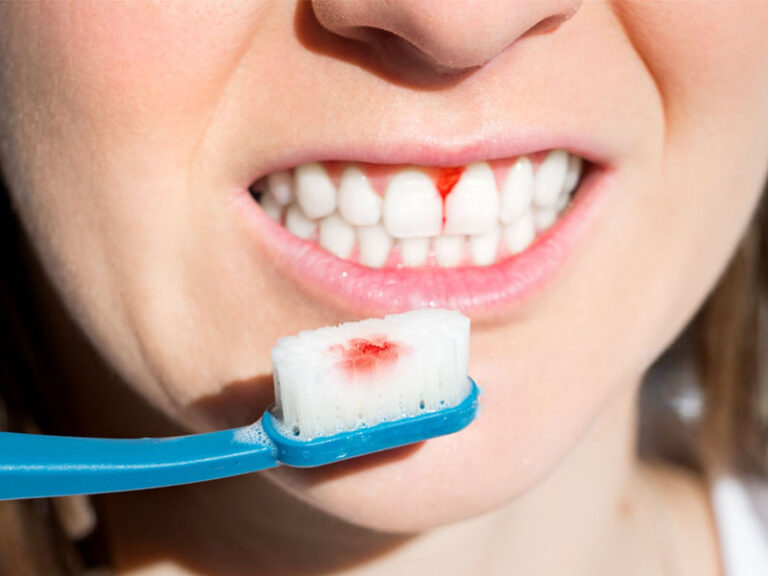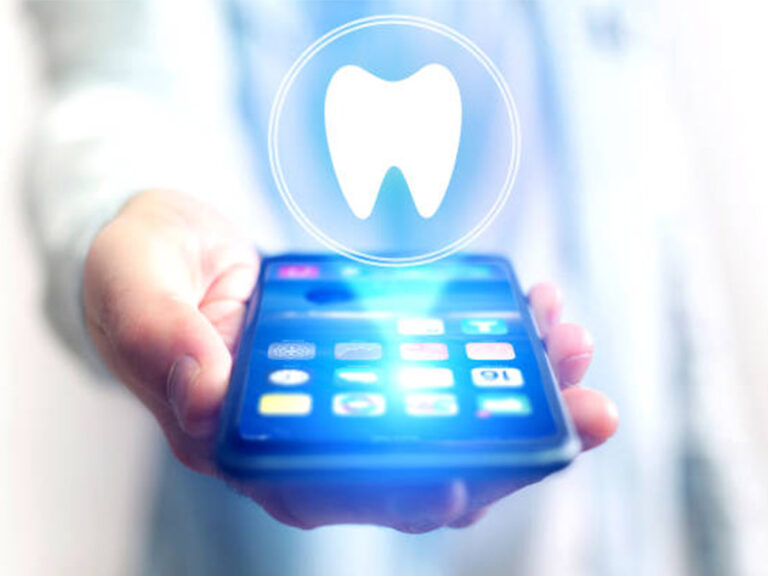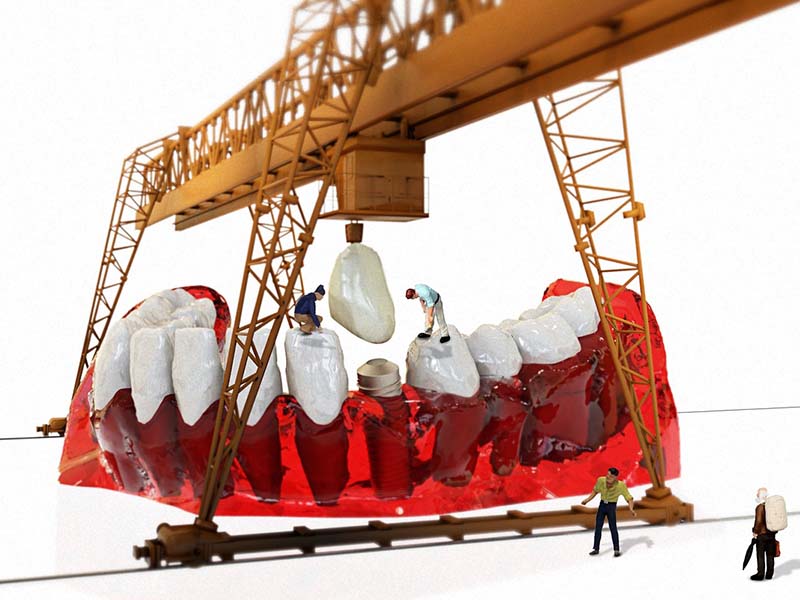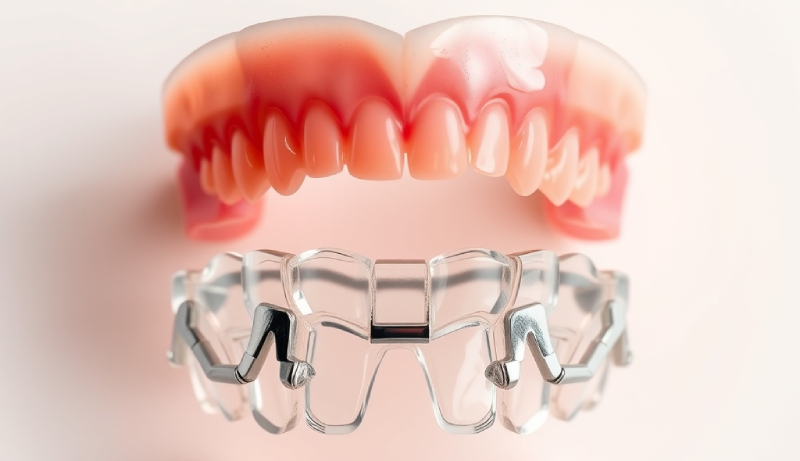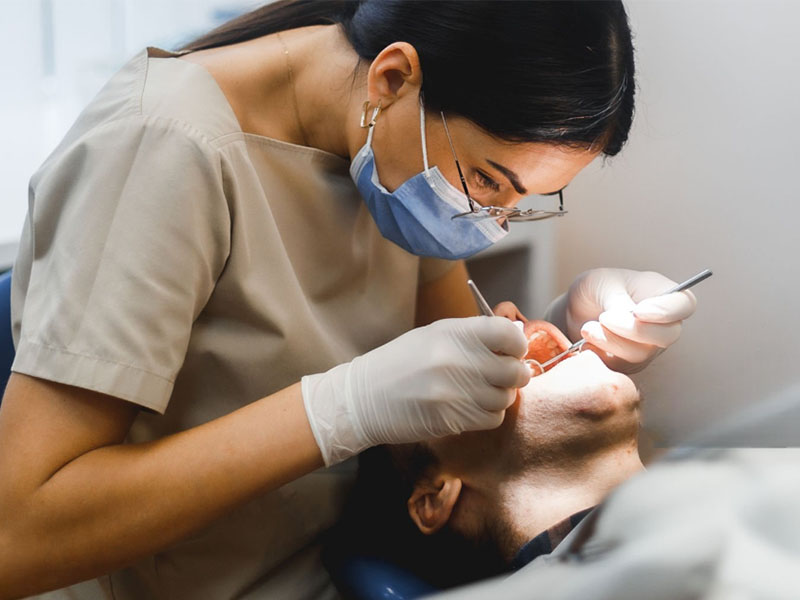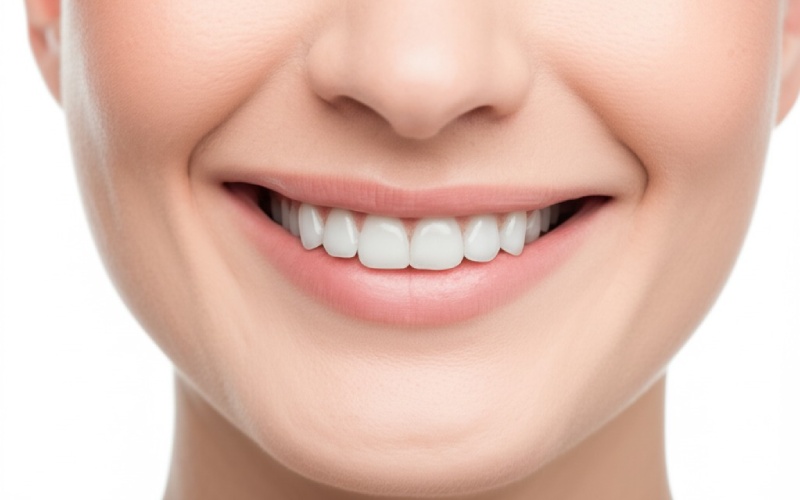
My Story with a New Smile: Getting Screw-In Dentures
If you’re reading this you’re probably in the same boat I was a few years back. You’re tired of regular dentures or just plain sick of the gaps left by missing teeth. I remember always worrying my denture would slip and I could barely eat what I wanted. It really killed my confidence. So I started looking for a more permanent fix and found out about implant-supported dentures also known as “screw-in” dentures. It changed everything for me.
I want to walk you through my story and all the stuff I learned from the first doctor’s visit to my final smile. Hopefully it helps you figure out if this is the right choice for you too.
Table of Contents
So What Exactly Are Screw-In Dentures?
When I first heard “screw-in dentures” I pictured something from a hardware store. It’s not like that at all. It’s actually a really clever and super-secure way to replace all your top or bottom teeth.
Basically it’s a full set of teeth that gets permanently attached to your jaw with a few dental implants.
Think of it like building a deck. You don’t just lay the boards on the grass you pour concrete footings first to make a solid foundation. Here the dental implants are those footings. They’re little titanium posts that a surgeon places in your jawbone. Over a few months your bone actually grows onto the implants in a process called osseointegration. This makes an unbelievably strong base.
Once that foundation is rock-solid your brand-new teeth are screwed right onto those implants. They’re called “fixed” dentures because they don’t come out. You can’t remove them yourself but your dentist can for a special cleaning.
How Are They Different from Other Dentures?
I had a normal upper denture before this and the difference is like night and day.
- Regular Dentures vs. Screw-In Dentures: My old denture just sat on my gums and was held on with goopy paste and suction. It slipped when I talked or ate which was so embarrassing. It also covered the roof of my mouth so I couldn’t taste food as well. Screw-in dentures are locked into my jawbone so they don’t move. Period. They work and feel like real teeth and since my palate isn’t covered anymore food tastes amazing.
- Snap-In Dentures vs. Screw-In Dentures: I also looked into snap-in dentures. These also use implants but you “snap” them on and off yourself for cleaning. They’re way better than regular dentures but they still aren’t as solid as the screw-in kind. I wanted the most secure option possible and my dentist said the screw-in type was it.
The Science Behind the Smile: How They Stay Put
Learning how it all works made me feel way better about the whole thing. It’s not just jamming screws in your jaw. It’s a smart process your body does on its own.
The Magic of Osseointegration
The real star of the show here is osseointegration. That’s the fancy word for your jawbone growing around and locking onto the titanium implant. Your body thinks the titanium is part of you so it doesn’t reject it. This bond is what makes the implant a permanent part of your jaw and it lets you chew a big steak without any fear. This part is super important and it takes a few months to happen.
The Main Parts
My dental team showed me it’s basically a three-part system:
- The Dental Implant: This is the little titanium screw that goes into your jawbone. It’s like a new tooth root.
- The Abutment: This is a small connector piece. It gets attached to the implant and sticks out just a little from your gums. Your new teeth get attached to this part.
- The Prosthesis (The New Teeth): This is your custom-made set of teeth. It’s screwed onto the abutments and it’s made from really tough stuff like acrylic or Zirconia to look and feel real.
All-on-4® vs. All-on-6: What’s That Mean?
I kept hearing about “All-on-4®” and “All-on-6.” These are just names for specific ways to use screw-in dentures to replace a full set of teeth.
- All-on-4®: This is a popular method where all your new teeth are held in by just four implants placed in very specific spots. Two go in the front and two go in the back at an angle. Placing them at an angle is a clever trick because it means even people who have lost some jawbone might not need a bone graft.
- All-on-6 (or More): Sometimes especially for the upper jaw where bone can be a bit softer your dentist might want to use six or even eight implants. This spreads out the pressure from chewing and makes everything even more stable. My dentist checked my bone with a 3D scan and said All-on-6 was the best bet for me to make sure it would last a very long time.
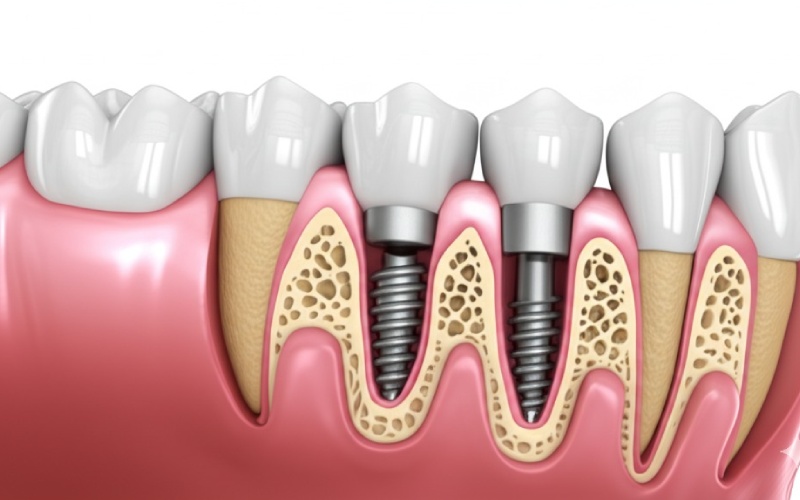
The Awesome Ways They Changed My Life
Getting screw-in dentures was a huge decision but the payoff has been incredible.
- Amazing Stability and Comfort: This is the #1 reason I did it. There is zero movement. No more embarrassing slips and no more sore spots on my gums from a denture rubbing all day. I can laugh as loud as I want and not worry for a second.
- Eat Anything You Want: I’ll never forget biting into a crisp apple for the first time after getting my new teeth. It was a simple thing I hadn’t done in years. From corn on the cob to almonds my chewing is back to normal. It’s helped me eat healthier and just enjoy meals again.
- They Look and Feel Real: My new teeth were made just for me and they fit my face perfectly. They look so real that nobody can tell they aren’t my own. They’re also not bulky like my old denture so my mouth feels normal.
- It Stops Bone Loss: This was a big one for me. When you lose teeth your jawbone starts to shrink because it’s not getting a workout from chewing. That can give you that “caved-in” look. Implants act like tooth roots and they give your jaw a reason to stay strong and healthy.
- They’re Built to Last: If you take care of them these dentures are a long-term fix. The materials are super tough and the science behind it all is proven to work. It felt like I was really investing in my own health and happiness.
- No More Daily Headaches: I love not messing with denture glue or taking my teeth out every night. I just brush them in my mouth like they’ve always been there. It’s a small thing but it makes my daily routine so much easier.
- My Confidence is Sky-High: This might be the biggest perk of all. The confidence you get from a great, secure smile is priceless. I feel more like myself again. I want to go hang out with people and I’m just happier overall.
My Journey Step-by-Step: The Implant Process
The whole thing from start to finish took about six months. Here’s a quick rundown of what happened.
1. The First Visit and Game Plan
This was the most important step. I met with a prosthodontist a dentist who’s an expert in implants. He looked at everything very carefully and used 3D scans to check my jawbone. We talked about what I wanted and what I could afford and he laid out a clear plan for me. That’s when we decided All-on-6 was the way to go.
2. The Implant Surgery
I was nervous about the surgery but it was way easier than I expected. I chose sedation dentistry so I was totally relaxed and comfortable the whole time. The surgeon put the six titanium implants in my jaw. It took a few hours and I left that day with a temporary set of teeth already attached. I never had to go a single day without a smile.
3. Healing Time
Now came the waiting game. For the next few months my jawbone healed and fused to the implants. It didn’t hurt but I did have to eat softer foods for a bit so I wouldn’t put too much pressure on them. I had a few check-ups to make sure everything was healing right.
4. Getting My Final Smile
After about 4-6 months my implants were locked in solid and it was time for the best part. The dentist took molds of my mouth and sent them to a special lab where my permanent Zirconia teeth were made. When they were ready I went in for the final fitting. The dentist took off my temporary teeth and screwed my beautiful new ones into place. He tweaked them a bit to make sure my bite felt perfect. Seeing that new smile in the mirror was an unbelievable feeling.
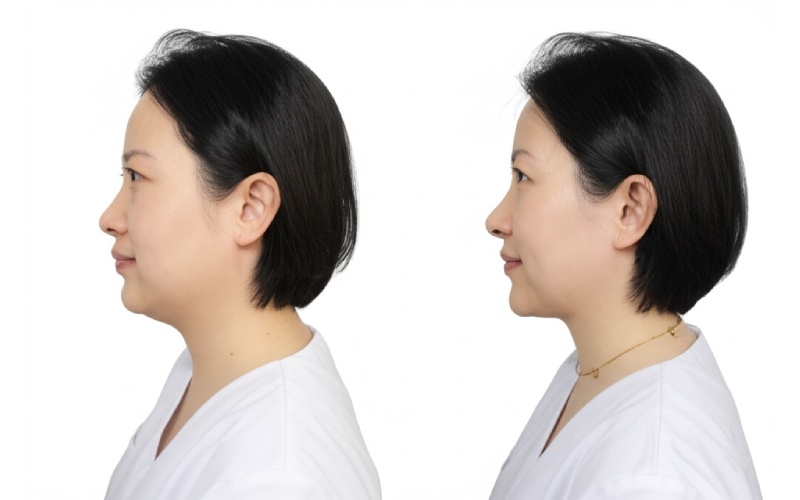
The Big Question: What’s This Going to Cost Me?
Let’s be real this is a big expense. The price for screw-in dentures can be all over the place and it depends on a few things:
- How many implants you need: All-on-4 usually costs less than All-on-6.
- The material for your new teeth: A premium material like Zirconia costs more than a strong acrylic.
- Extra work you might need first: If you need bone grafts to build up your jaw this will add to the cost.
- Where you live: Dental costs are different from city to city.
- Your dentist’s experience: A top-notch specialist might charge more but for a big job like this their skill is worth it.
You can probably expect the cost for one full arch (top or bottom) to be somewhere between $20,000 and $50,000 or even more. It’s a huge range I know. The best thing to do is get a detailed price quote at your first visit.
Most dental insurance won’t cover everything but it might pay for some parts of it. I used a mix of my insurance a payment plan through CareCredit and my own savings to make it happen.
Keeping Your New Smile Looking Great: Cleaning and Care
Even though they’re “permanent” you still have to take good care of them to make sure they last a lifetime.
- Daily Brushing: I brush my new teeth twice a day with a soft toothbrush and gentle not gritty toothpaste. The trick is to clean really well where the teeth meet your gums.
- Special Tools: A water flosser like a Waterpik is a total game-changer. It’s great for flushing out tiny bits of food from under the teeth and around the implants. I also use special floss threaders to get into the tight spots.
- Regular Dental Visits: I see my hygienist every six months. They have special tools to clean around the implants in ways I can’t at home. Once a year they’ll even unscrew the teeth to give everything a super deep clean and check on the implants and my gums.
- What to Avoid: Just like with real teeth it’s a good idea to stay away from super hard or sticky foods that might break the new teeth. I also stopped chewing on ice. It’s just not worth the risk!
Is This Right for Me?
Screw-in dentures are an amazing fix but they aren’t for everybody. This works best for people who:
- Have enough jawbone: You need a solid amount of bone to hold the implants securely. If you don’t a bone graft can usually fix that.
- Are in good general health: Some health problems like uncontrolled diabetes can make it harder to heal right.
- Are serious about keeping their mouth clean: You have to be willing to do the daily cleaning.
- Don’t smoke: Smoking makes it much more likely for implants to fail. Your dentist will tell you to quit before you even start.
Even if you’ve lost a lot of bone or have health issues don’t give up. A complete check-up with an implant expert is the only way to really know what will work for you.
Let’s Be Honest: The Downsides and Things to Think About
No surgery is 100% risk-free and it’s good to know what could happen.
- Surgery Risks: Like with any surgery there’s a small chance of infection or other issues. Choosing a great surgeon cuts way down on these risks.
- Implant Failure: It’s rare but sometimes an implant doesn’t fuse with the bone like it’s supposed to. The success rate is really high (over 95%) so it’s not common.
- Soreness After Surgery: I had some swelling and soreness for a few days after but it was nothing some Advil couldn’t handle. It was much easier than I thought it would be.
The biggest “risk” in my book was the cost. It’s a major investment but the change in my quality of life has made it worth every single penny.
Questions I Get Asked a Lot (Answered from My Experience)
Q: Can you take screw-in dentures out yourself? A: Nope and that’s the whole point! They’re fixed in place. Only your dentist can take them out with a special tool. They usually do this once a year for a deep cleaning.
Q: How long do they last? A: The implants themselves can last your whole life if you take care of them. The teeth part might need a touch-up or replacement after 10-15 years just from normal wear and tear.
Q: Did the surgery hurt? A: The surgery itself was painless because I was sedated. Afterwards I was a little sore but regular pain medicine took care of it. I was really surprised by how fast I felt better.
Q: How do they stack up against snap-in dentures? A: Snap-ins are removable and can move a tiny bit. Screw-ins are totally fixed and feel exactly like strong natural teeth. Plus they don’t cover the roof of your mouth which is a huge bonus for tasting food.
Q: Can I really eat anything with them? A: Pretty much! I eat steak apples and corn on the cob—stuff I hadn’t enjoyed for a long time. The chewing power is unreal. I still don’t do silly things like crack nuts with my teeth but other than that my menu is wide open.
My Final Take: It’s an Investment in You
Getting screw-in dentures was one of the best choices I’ve ever made. It took some patience and it was a big investment but the payoff has been amazing. Waking up every day with strong stable teeth that I don’t have to worry about is a freedom that’s hard to describe.
If you’re thinking about it my best advice is to do your homework. Find a really good implant specialist you feel good about and ask a ton of questions. It’s a journey but it’s one that can end with a smile that changes your life.

